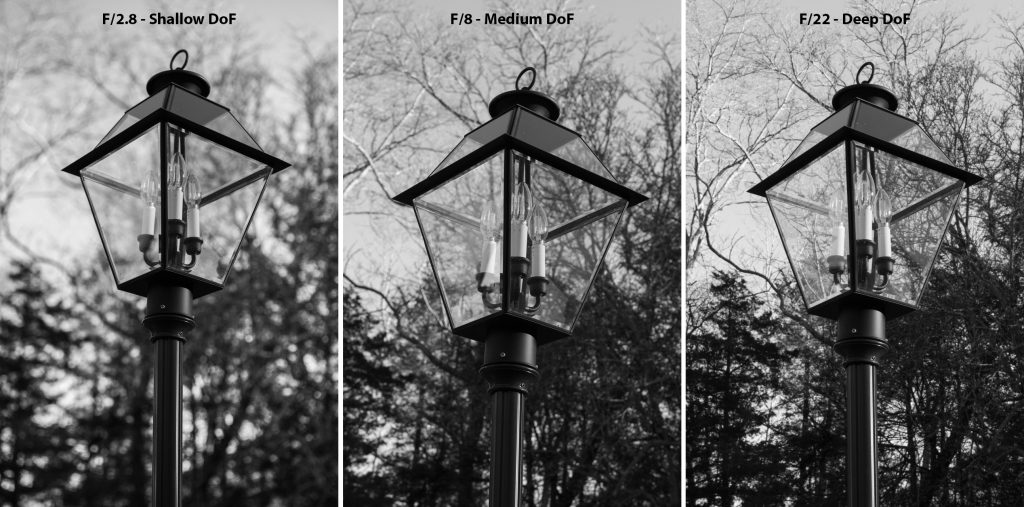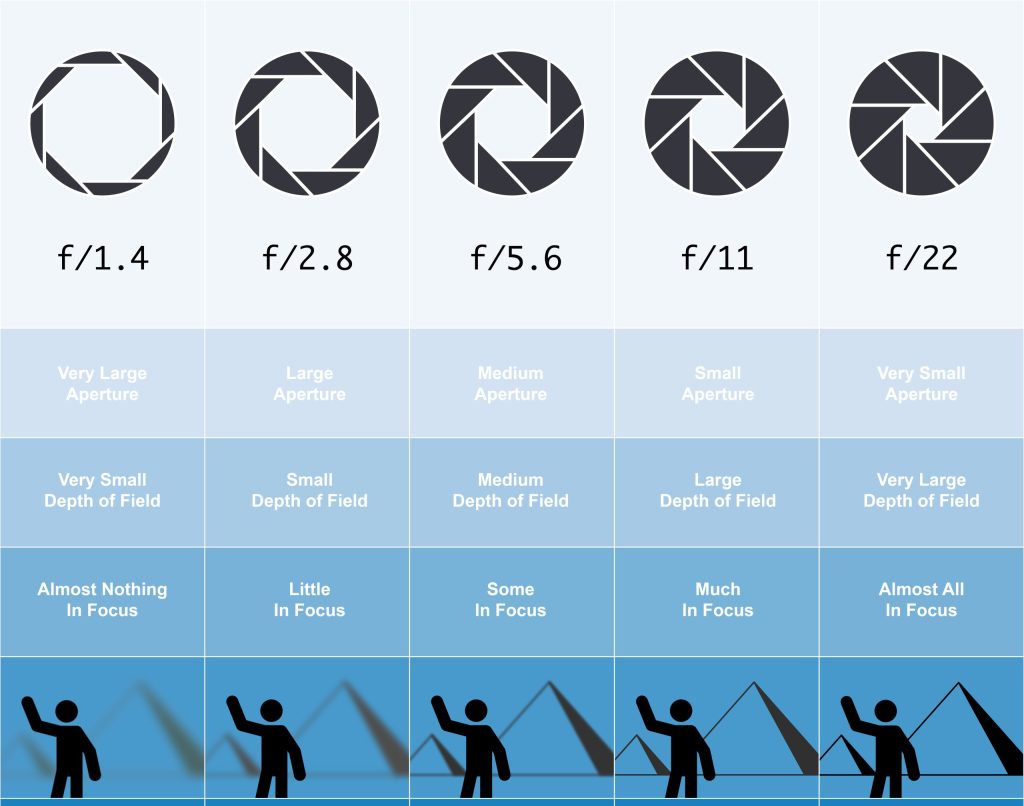14 Depth of Field
SNAPSHOT
Defining Depth of Field:
- Shallow DoF
- Deep DoF
The three factors affecting DoF explained:
- Aperture and DoF
- Distance and DoF
- Focal length and DoF
Depth of Field (DoF) refers to the distance between the closest and farthest objects that appears acceptably sharp in a photograph.
In other words, it’s the area in front of and behind the subject that appears in focus.
Three factors affecting the DoF
- APERTURE: the smaller the F stop number the shallower the DoF
- DISTANCE: The closer you are to your subject, the shallower the DoF
- FOCAL LENGTH: The longer the lens (telephoto) the shallower the DoF
To increase Dof:
- Use a big F stop number like F 11, F 16 or F 22
- Move further away from the subject you are focusing on
- Shorten the focal length of your lens with a wide angle lens like 24mm, 28 mm, and 35mm
To decrease DoF:
- Use a small f stop number like F 2, F 2.8, or F 4
- Move closer to the subject you are focusing on
- Use a longer focal length lens like 80mm, or telephoto lens
Let’s explore the above options
Aperture and DoF

When you focus your lens on a subject (the lamp post in our example) the depth of field will change depending on the F stop you are using.
The larger the opening of the lens (small F Stop number) the less the Depth of Field. Only the person is sharp when using F 1.4 and the background appears blurred/out of focus.
The smallest opening (large F stop number) the greater the Depth of Field. The person and the background are sharp when using F 22.

Focus distance and DoF

The closer the subject is to the camera, the shallower the Depth of Field.
These three photographs above are all focused on the same subject (bird feeder) and were taken with the same F stop and shutter speed, the only difference is the distance of the camera from the subject being photographed. The photographer kept walking closer to the subject (bird feeder).
Notice how the size of the leaves in the bird feeder gets much bigger while the size of the windows directly behind the feeder remains about the same. The depth seems to increase because the camera was brought closer to the subject.

Just as in the previous example, the closer the subject is to the camera, the shallower the Depth of Field. These three photographs are all focused on the same subject (planter-box in the middle of the hallway) and were taken with the same F stop and shutter speed, the only difference is the distance of the camera from the subject being photographed. The photographer kept walking closer to the subject (planter box).
Notice how the size of the leaves in the planter gets much bigger while the size of the round windows on the door remains about the same. The depth seems to increase because the camera was brought closer to the subject.
Focal length and DoF
A telephoto or long lens will give you a shallow DoF. A wide-angle lens (short lens) will give you a large DoF.

Depth of Field (DoF) refers to the distance between the closest and farthest objects that appears acceptably sharp in a photograph
